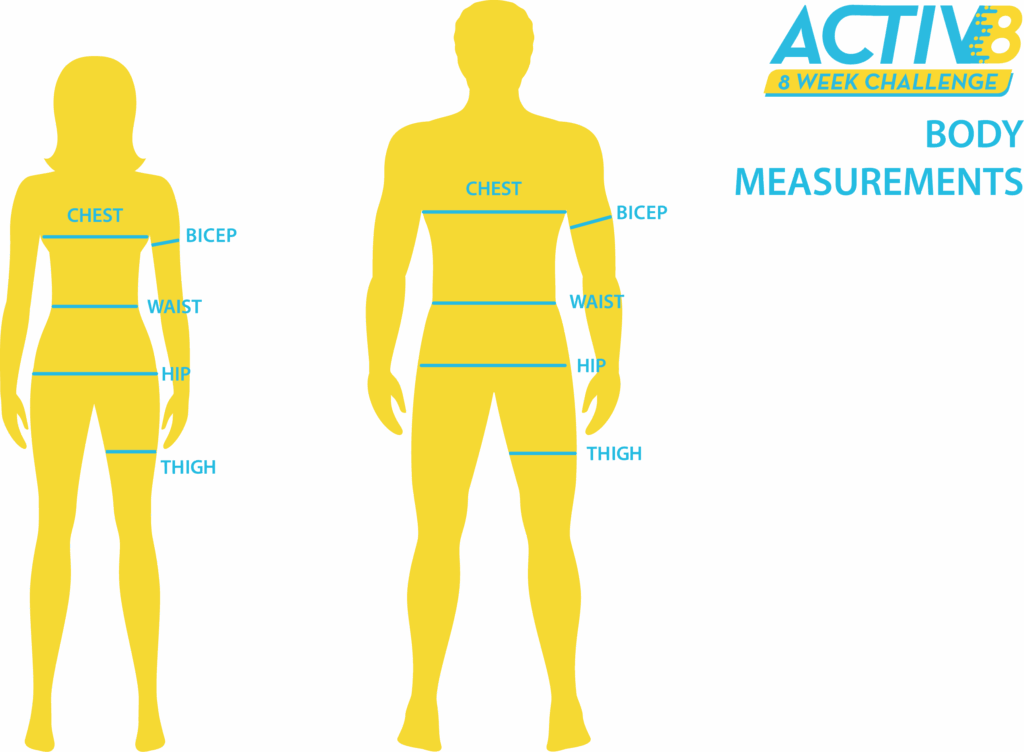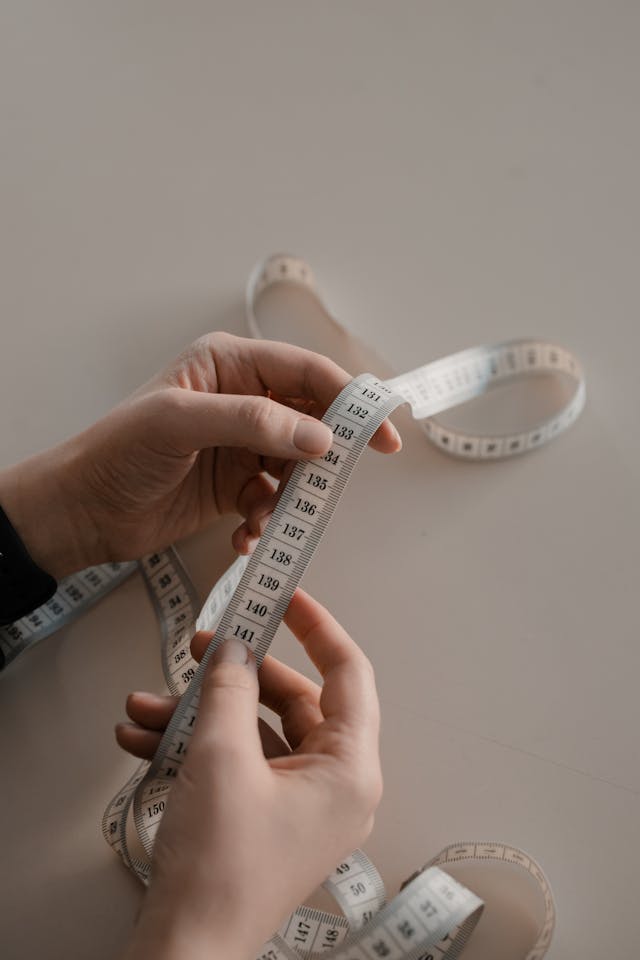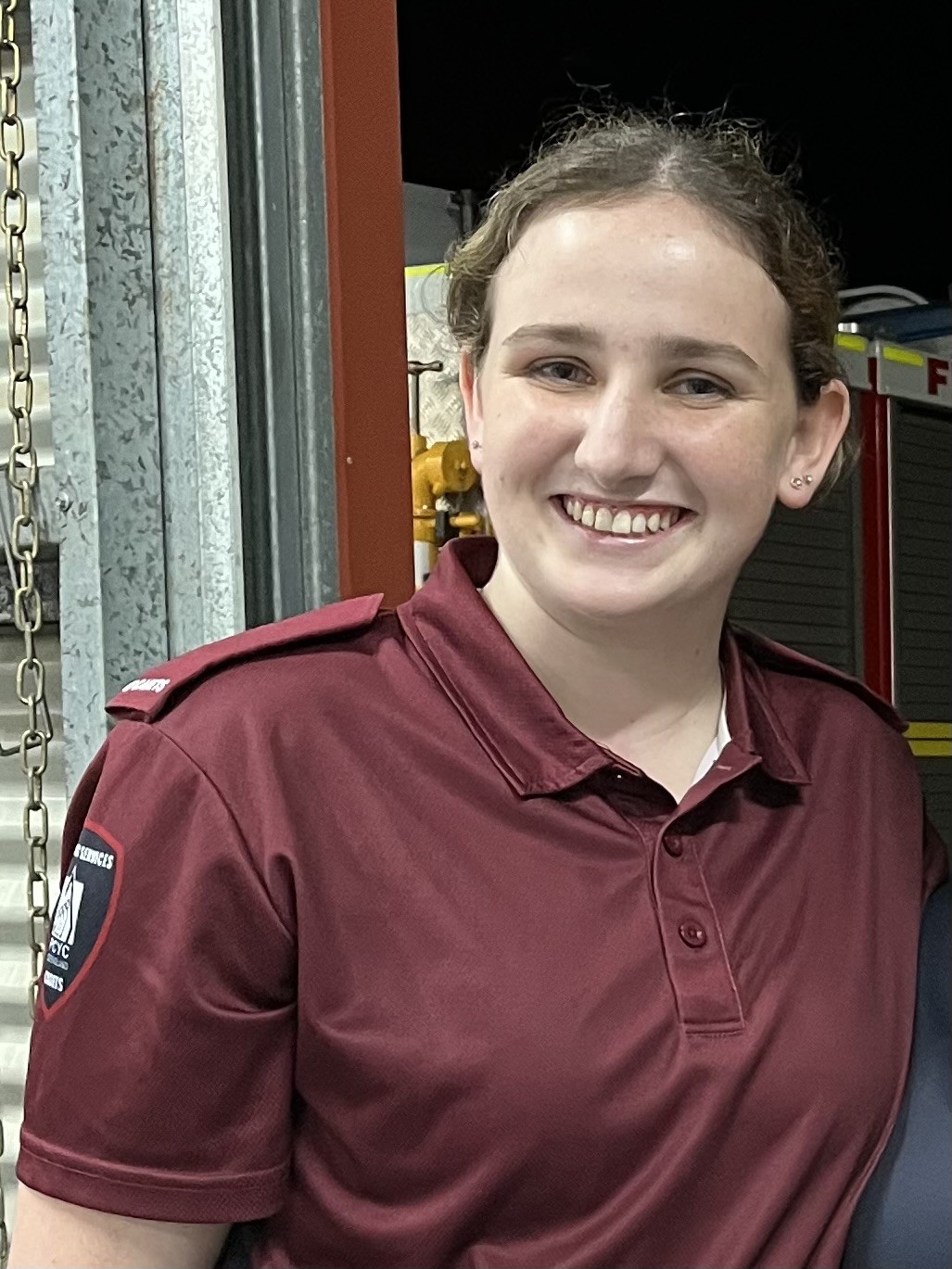Tracking your progress through body measurements is one of the most reliable ways to measure real results beyond just the number on the scale.
Consistency Tips
- Always measure at the same time of day (preferably morning).
- Measure directly on the skin.
- Use the same measuring tape each time.
- Relax your body and don’t flex or suck in.

Here’s how to properly measure the 5 key areas:
Arms (Biceps)
Where: Measure the thickest part of your upper arm (biceps).
How: Keep your arm relaxed by your side with your palm facing forward. Wrap the measuring tape around the peak of the bicep muscle belly.
Tip: If you’re unsure where the thickest part is, gently feel your upper arm to find the peak of the bicep when relaxed and that is the spot.
Chest
Where: Across the nipple line.
How: Stand tall and wrap the tape evenly around your chest, arms raised slightly to position the tape. Bring your arms back down, adjust the tape to ensure its flat and snug (not tight), and then take your measurement.
Waist
Where: At the narrowest point of your torso. If this is unclear, measure across the belly button.
How: Stand relaxed, exhale gently, and wrap the tape around your waist. Make sure the tape is level, flat, and snug, not squeezing.
Hips
Where: The widest part of your glutes.
How: Stand with your feet together and wrap the tape around the fullest part of your buttocks. Ensure its level and snug all the way around.
Legs (Thighs)
Where: 25 cm (10 inches) above the top of your kneecap (patella).
How: Stand tall and measure around the midpoint of your thigh. Alternatively, place your pinky on your kneecap and stretch your thumb up to mark the mid-thigh.
Bonus: Weigh yourself
Weigh in each time you take your measurements for a complete picture of progress.
Do it under the same conditions (same scale, time of day, and clothing).




